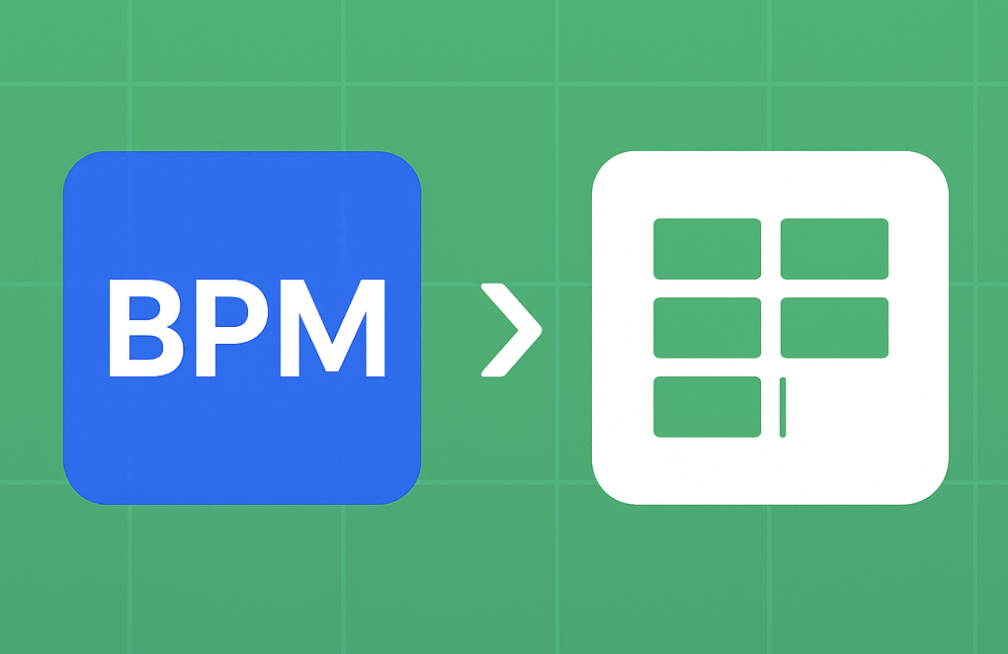5 Reasons BPM Software Beats Spreadsheets for Process Management
Managing business processes through spreadsheets is a common practice, but it's fundamentally flawed for complex organizational workflows. While...

In today's digital workplace, organizations invest heavily in sophisticated design tools and enterprise resource planning (ERP) systems, believing these platforms will streamline their operations and eliminate inefficiencies. Yet despite these investments, teams across industries find themselves constantly reaching for spreadsheets, shared drives, and makeshift solutions to manage their day-to-day processes. This disconnect reveals a fundamental problem: the tools we rely on for business operations aren't designed to handle the messy, dynamic reality of process management.
Design tools excel at what they're built for—creating, iterating, and collaborating on visual assets. ERPs shine at managing structured data and financial transactions. These systems work beautifully within their intended domains, but they struggle when processes cross boundaries or require the kind of flexible, ad-hoc coordination that real work demands.
Consider a typical product development cycle. Your design team uses MiTek or Alpine for mockups and prototypes. Your ERP system tracks inventory, purchase orders, and manufacturing schedules. But what happens to the countless micro-processes that connect these systems? The approval workflows, the feedback loops, the version control across departments, the communication threads that determine whether a project succeeds or fails—these critical elements often fall through the cracks.
When faced with these gaps, teams inevitably turn to what feels familiar and flexible: spreadsheets and shared drives. On the surface, this makes perfect sense. Spreadsheets are universal, customizable, and immediately accessible. Need to track design revisions? Create a spreadsheet. Managing vendor approvals? Another spreadsheet. Coordinating cross-departmental feedback? You guessed it—spreadsheet.
Shared drives become the catch-all repository for everything that doesn't fit neatly into existing systems. File naming conventions emerge organically (and inconsistently). Folder structures grow like digital kudzu. Version control becomes a game of "final_final_v3_ACTUAL_FINAL.xlsx."
While these improvised solutions provide immediate relief, they create long-term inefficiencies that compound over time:
Information Silos: When processes live in scattered spreadsheets and drive folders, institutional knowledge becomes fragmented. Team members develop their own systems, making collaboration difficult and knowledge transfer nearly impossible.
Manual Overhead: What starts as a quick tracking sheet inevitably requires manual updates, data entry, and reconciliation between systems. The time saved by bypassing formal tools is quickly consumed by maintenance overhead.
Version Control Chaos: Without proper versioning systems, teams waste countless hours determining which document or data set is authoritative. "Is this the latest version?" becomes a daily refrain.
Compliance and Audit Nightmares: When processes exist outside formal systems, maintaining compliance becomes exponentially more difficult. Audit trails disappear, approval histories become unclear, and regulatory requirements fall by the wayside.
Scalability Breakdown: Spreadsheet-based processes that work fine for a team of five become unwieldy burdens for teams of fifty. What seemed efficient at small scale becomes a bottleneck to growth.
Your design tools and ERPs aren't going anywhere—nor should they. But acknowledging their limitations in process management is the first step toward building more efficient, scalable operations that don't rely on digital duct tape to hold everything together.
Get a free process audit from a process expert at Cadynce. We’ll walk through your current bid to build process step by step to understand where your process might be broken. Schedule your free audit here!
Take our quick quiz to find out if your processes need rescuing.
Take the Quiz – Take 5 minutes to see where you stand. (Click here)

Managing business processes through spreadsheets is a common practice, but it's fundamentally flawed for complex organizational workflows. While...

Manufacturing businesses face a common challenge: scattered processes across departments, disconnected systems, and workflows that don't communicate...

Let's be honest: spreadsheets were never designed for process management. They were created for calculations and data analysis—and they excel at...